Collaborating with Medical Professionals to Create Accurate 3D Biomedical Animations
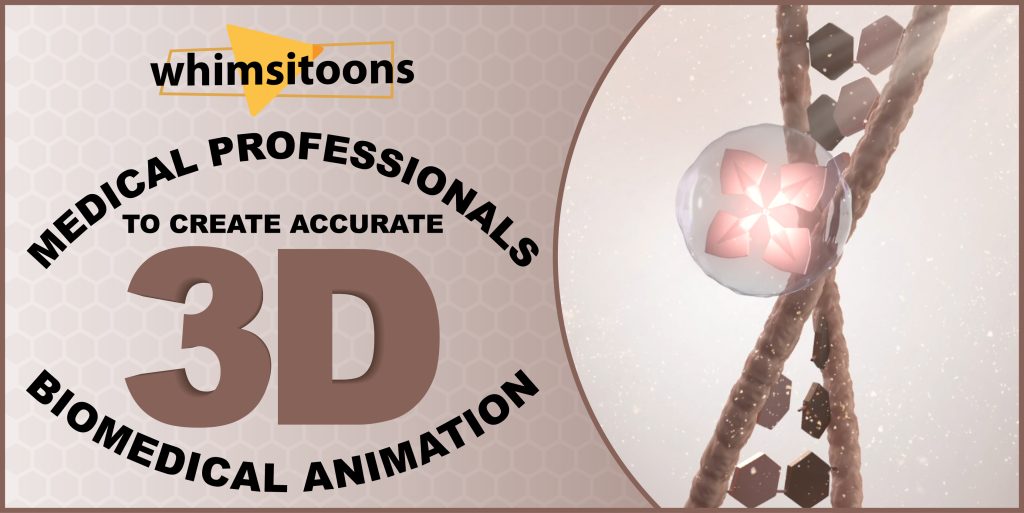
We all know that how much of the tiniest details matters in a medical world, these details can mean the difference between life and death.
This is why it is important to understand the concept of anatomy completely so that you don’t risk someone’s life.
These 3D breathtaking animations aren’t just an art, in fact they are the result of close collaboration between medical professionals and expert animators, bringing science into sharp focus to make it easier for everyone to know the procedure before getting or doing on some patient.
3D biomedical animations are changing the way we understand and communicate complex medical concepts.
By visualizing difficult biological processes and medical procedures, these animations enhance learning, improve patient education, and aid in medical marketing.
However, creating accurate and compelling 3D biomedical animations requires close collaboration with medical professionals. This Whimsitoons guide will help you learn about how this collaboration can be effectively achieved and the benefits it brings.
The Importance of Accuracy in 3D Biomedical Animations
Accuracy is crucial in 3D biomedical animations.
Medical professionals, such as doctors, surgeons, and researchers, are crucial in ensuring the animations are scientifically accurate and up-to-date with the latest medical knowledge.
Benefits of Accurate 3D Biomedical Animations
The 3D biomedical animations comes with its own set of benefits which you should know before getting the video related to your
-
Enhanced Learning:
Students and professionals can visualize complex processes, leading to better retention and understanding.
-
Improved Patient Education:
Patients can see exactly what will happen during a procedure or how a disease affects the body, making them feel more informed and at ease.
-
Effective Communication:
Clear, accurate animations help in conveying complicated details to non-experts, including patients, stakeholders, and the general public.
-
Medical Marketing:
High-quality animations can showcase the efficacy of new treatments or devices, helping in marketing and educational efforts.
5 Steps to Collaborate with Medical Professionals
Collaboration with medical professionals ensures that 3D biomedical animations are accurate but also engaging and informative. Here are the steps to promote effective collaboration:
Step 1: Initial Consultation and Planning
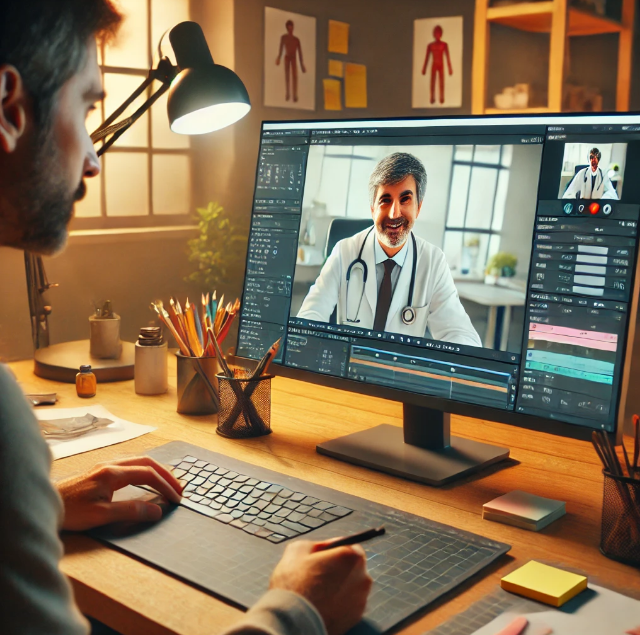
The process begins with an initial consultation between the animation team and the medical professionals.
This stage is crucial for understanding the scope of the project, the target audience, and the key messages that need to be conveyed.
- Define Objectives: Clearly outline what the animation aims to achieve when defining objectives.
- Identify Key Concepts: Pinpoint the essential medical concepts that must be included.
- Set Timelines and Milestones: Establish a timeline for the project with specific milestones for review and feedback.
Step 2: Gathering Medical Information

Accurate animations require detailed medical information.
This involves gathering and reviewing relevant medical literature, research papers, and clinical guidelines.
- Research and Literature Review: Collect the latest research and guidelines relevant to the topic.
- Interviews with Experts: Conduct interviews with medical professionals to gather insights and clarify complex concepts.
- Case Studies and Real-life Examples: Use real-life examples to make the animations relatable and realistic.
Step 3: Storyboarding and Script Development

Once the information is gathered, a storyboard and script are developed next.
This helps visualize the animation and ensures that the narrative flows logically.
- Create a Rough Sketch: Develop a rough sketch or storyboard outlining the main scenes.
- Draft the Script: Write a script that explains the visuals clearly and concisely.
- Review and Feedback: Share the storyboard and script with medical professionals for feedback and revisions.
Step 4: Designing and Animating
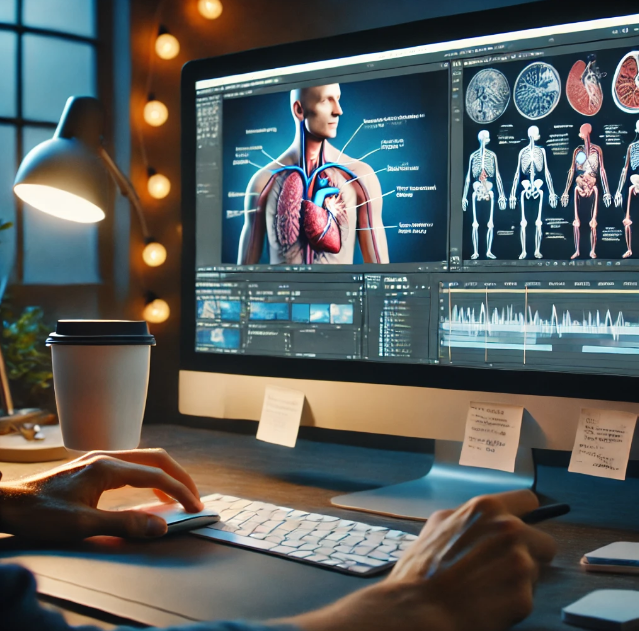
At this stage, the actual creation of the 3D animation begins.
This involves designing the models, textures, and animations based on the storyboard and script.
- Modeling: Create detailed 3D models of anatomical structures, cells, and medical devices.
- Texturing and Lighting: Apply realistic textures and lighting to enhance the visual appeal.
- Animation: Animate the models to represent the medical processes accurately.
- Voiceover and Sound Effects: Add voiceovers and sound effects to complement the visuals.
Step 5: Review and Revisions
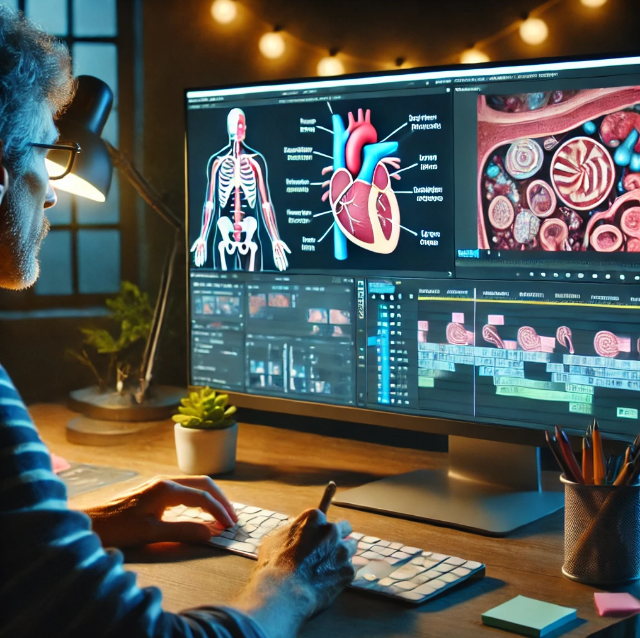
Continuous feedback from medical professionals is essential throughout the animation process.
Regular reviews ensure that the animation remains accurate and meets the project’s objectives.
- Regular Check-ins: Schedule regular meetings with medical professionals to review progress.
- Incorporate Feedback: Revise the text in accordance with the feedback that has been provided.
- Final Approval: Obtain final approval from medical professionals before the animation is finalized.
The Role of Medical Video Animation Services in Healthcare Communication
Medical video animation services are crucial for simplifying complex medical concepts into easy-to-understand visual content.
These services are used for patient education, medical training, and healthcare product marketing.
By combining medical expertise and advanced animation techniques, these services create scientifically accurate and engaging animations that are accessible to diverse audiences.
Investing in medical video animation services improves communication and bridges the gap between medical professionals and non-experts.
Advantages of Hiring Professional 3D Biomedical Animation Services
When it comes to creating high-quality 3D biomedical animations, hiring professional services can make a significant difference. Here are some reasons why you should consider hiring the best 3D biomedical animation company in the US:
Expertise and Experience
A 3D biomedical animation production company has the expertise and experience required to create detailed and accurate biomedical animations.
They are familiar with the latest tools and techniques, ensuring the animations are visually appealing and scientifically correct.
Access to Medical Experts
Top 3D biomedical animation studios often collaborate with a network of medical experts. This access to expertise ensures that professionals review and validate the animations, enhancing their credibility.
Customized Solutions
Professional services offer customized solutions tailored to meet the specific needs of their clients.
Whether you need a medical device animation or a detailed depiction of a biological process, they can create animations that fit your requirements.
Time and Cost Efficiency
Hiring professional services can save you time and money. They have the resources and expertise to complete projects efficiently, ensuring you meet your deadlines without compromising quality.
Advanced Technology
Professional animation companies use advanced technology and software to create high-quality animations. This ensures that the animations are accurate, visually stunning, and engaging.
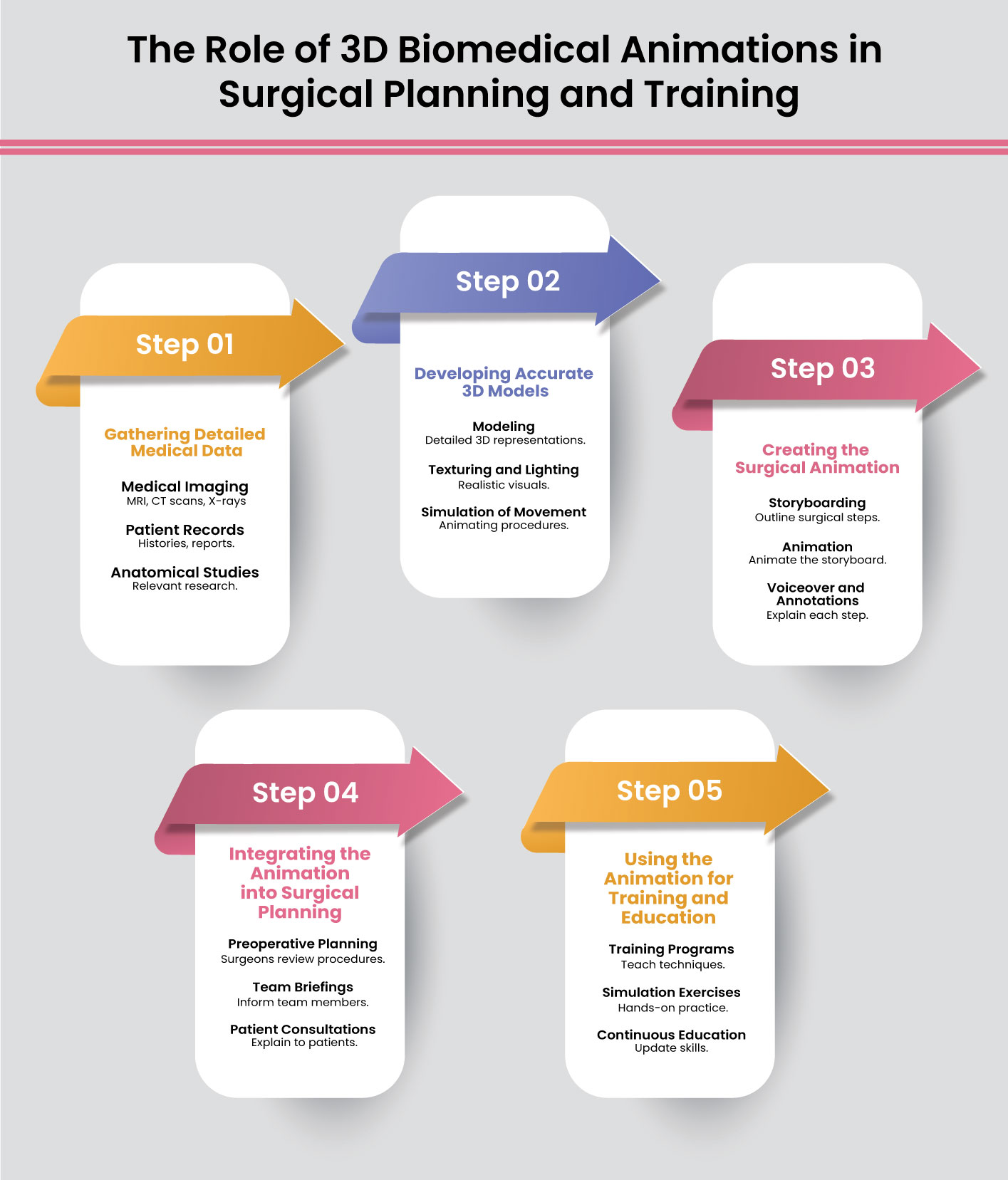
Case in Point: Creating Medical Device Animations
Medical device animations are a specific type of 3D biomedical animation that showcases how medical devices work.
These animations are particularly useful for medical device manufacturers who must demonstrate their products’ functionality and benefits to healthcare professionals and potential customers.
Why Medical Device Animations are Important
- Demonstrate Functionality: Show how the device works in a realistic and detailed manner.
- Enhance Marketing Efforts: Use animations in marketing materials to highlight the device’s benefits.
- Educate Users: Provide training and educational materials for healthcare professionals and patients.
Healthcare Video Animation Services
In addition to medical device animations, healthcare video animation services include many other applications.
These services are essential for creating educational and promotional content that is both engaging and informative.
By leveraging the expertise of medical professionals and animation studios, healthcare organizations can produce high-quality video content that meets their specific needs.
Types of Healthcare Video Animation Services
- Patient Education Videos: Inform patients about medical procedures, conditions, and treatments.
- Training Modules: Develop training materials for healthcare professionals.
- Marketing Videos: Promote healthcare services and products effectively.
- Research Presentations: Visualize and present complex research findings in an accessible manner.
Table: Comparison of Animation Tools for 3D Biomedical Animations
|
Animation Tool |
Key Features |
Pros |
Cons |
|
Blender |
Open-source, customizable, powerful modeling |
Free, large community support |
Steeper learning curve |
|
Autodesk Maya |
Industry standard, advanced features |
High-quality output, extensive plugins |
Expensive |
|
Cinema 4D |
User-friendly, excellent for motion graphics |
Intuitive interface, great for beginners |
Limited in complex modeling |
|
3Ds Max |
Comprehensive modeling tools, flexible |
Versatile, strong rendering capabilities |
High cost |
|
Houdini |
Procedural generation, advanced effects |
Powerful for simulations, highly customizable |
Requires technical knowledge |
Conclusion
By collaborating closely with medical professionals and leveraging the expertise of professional and top 3D biomedical animation companies, you can create accurate, compelling, and effective biomedical animations that serve a wide range of purposes in the healthcare industry.
Whether for education, marketing, or training, these animations are powerful tools that enhance understanding and communication in the medical field.
FAQs
Q 1: What are 3D biomedical animations used for?
3D biomedical animations are used for various purposes, including medical education, patient education, research presentations, marketing, and training. rnThey help visualize complex biological processes and medical procedures understandably and engagingly.rn
Q 2: How do you ensure the accuracy of 3D biomedical animations?
Accuracy is ensured by collaborating with medical professionals, conducting thorough research, and continuously reviewing the animations with experts. Feedback and revisions are necessary parts of the process to maintain scientific accuracy.rn
Q 3: What benefits do I get when I hire 3D biomedical animation services?
Hiring professional services ensures high-quality, accurate, and visually appealing animations. Professionals have the expertise, access to advanced technology, and a network of medical experts to create animations that meet your specific needs and deadlines.rn
Q 4: How long does it take to create a 3D biomedical animation?
The time required to create a 3D biomedical animation depends on the project's complexity. It could be just a few weeks or even several months long. A clear project plan with defined milestones can help manage the timeline effectively.rn
Q 5: Can 3D biomedical animations be used in medical device marketing?
Yes, 3D biomedical animations are highly effective in medical device marketing. They can demonstrate the functionality, benefits, and applications of medical devices in a detailed and visually engaging manner, making them valuable tools for marketing and education.










